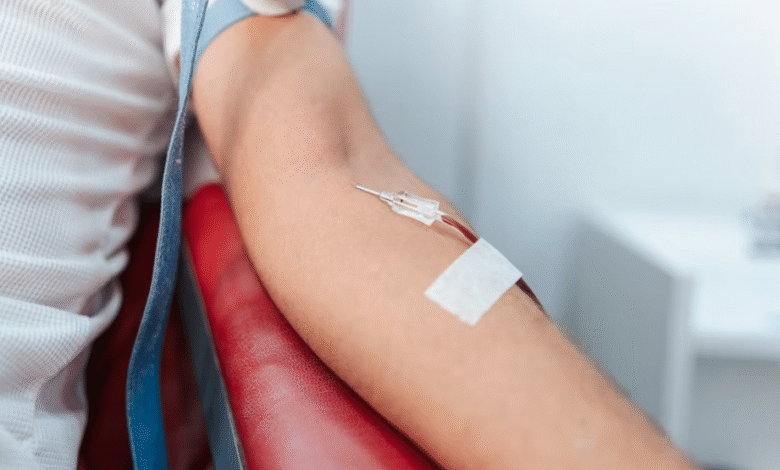Everything Parents Need to Know About Cord Blood Banking

Becoming a parent is filled with decisions, both big and small, that can shape your child’s future. One of the important choices that many new parents encounter is whether to store their baby’s cord blood. Cord blood banking has been gaining more attention over the past few decades, and for good reason. It offers potential medical benefits and the chance to preserve life-saving stem cells.
But with so much information out there, it can feel overwhelming to understand what cord blood banking really is, how it works, and whether it is the right decision for your family. This guide aims to answer these questions and give parents a clear understanding of what they need to know.
Understanding Cord Blood
Cord blood is the blood that remains in the umbilical cord and placenta after a baby is born. Unlike ordinary blood, it contains a rich supply of hematopoietic stem cells, which are the building blocks of blood and immune systems. These stem cells are unique because they can transform into different types of blood cells, making them highly valuable for treating various medical conditions.
Collecting cord blood does not harm the mother or the baby in any way. Once the cord is clamped and cut, the blood is drawn and stored for future use. This process is safe, quick, and painless, making it an appealing option for parents who wish to preserve their child’s biological resources.
What Is Cord Blood Banking?
Cord blood banking refers to the process of collecting and storing cord blood so that it can be used later if needed. Once collected, the blood is processed in a laboratory to separate the stem cells from other components. These stem cells are then cryogenically frozen and preserved under controlled conditions, where they can remain viable for decades. There are two main approaches to cord blood banking:
- Public cord blood banking:
Allows parents to donate their child’s cord blood to a shared registry, making it available to anyone in need of a transplant. In this case, families do not retain ownership of the sample, but they contribute to a greater medical resource.
- Private cord blood banking:
On the other hand, stores the cord blood exclusively for the child and family who collected it. This option involves storage fees but provides guaranteed access if the need arises.
How the Collection Process Works
The collection process is straightforward and does not interfere with the birthing experience. After delivery, once the umbilical cord is clamped and cut, a healthcare professional draws the remaining blood from the cord and placenta. The process takes only a few minutes, and the mother and baby do not feel anything during it.
The blood is then sealed in a sterile container and sent to a laboratory for processing. Both vaginal and cesarean births allow for cord blood collection, although parents typically need to make arrangements in advance to ensure everything is prepared before delivery day.
See also: Choosing the Right Skincare Routine for Healthy Skin
Why Parents Consider Cord Blood Banking
The main reason parents choose to bank cord blood is the medical potential it carries. Stem cells from cord blood have been used in the treatment of more than 80 serious conditions, including leukemia, lymphoma, sickle cell anemia, and various immune system disorders. Families with a history of such conditions often view cord blood banking as a form of medical security.
Even in cases where there is no family history, many parents see it as a proactive step that may one day benefit their child or another family member. Research into cord blood continues to grow, and scientists are exploring its potential in regenerative medicine for conditions like cerebral palsy, diabetes, and spinal cord injuries. This forward-looking aspect is one of the reasons cord blood banking remains a subject of interest for many families.
The Benefits of Cord Blood Banking
Cord blood banking offers several notable advantages for families. The first and most obvious benefit is the possibility of having a readily available source of stem cells if the child or a family member ever requires a transplant. Unlike bone marrow transplants, which require time and compatible donors, cord blood is collected at birth and preserved immediately. It also carries a lower risk of rejection when used for transplants within the family.
Another benefit is the simplicity of the collection process, which is safe, painless, and does not interfere with the birth itself. Many parents also take comfort in knowing that research continues to expand the potential uses of cord blood, meaning the value of storing it today could increase in the years to come.
The Limitations to Keep in Mind
Despite its advantages, cord blood banking does come with limitations that parents should weigh carefully. The most common concern is cost. Private banking requires both an initial fee for collection and ongoing fees for storage, which can add up over time.
Another limitation is the fact that many families may never actually need to use the stored cord blood, making it a form of biological insurance rather than a guaranteed necessity. In some cases, a single cord may not contain enough stem cells for treatments requiring larger volumes, especially for adult patients. Furthermore, while research is promising, many potential future uses of cord blood are still under study and are not yet standard medical treatments.
Factors to Consider When Making a Decision
Deciding whether to bank your baby’s cord blood is a personal choice, and it is important to look at it from multiple angles. Families with a history of genetic or blood-related illnesses may feel that banking offers peace of mind. Others may see the costs as too high for something they might never use.
Parents should also consider whether they are more inclined toward private storage for personal security or public donation for the benefit of others. Speaking with healthcare providers can be helpful, as they can explain how the process fits into the birth plan and provide professional guidance based on your family’s circumstances.
Looking Toward the Future
Cord blood banking is not only about the present but also about the future. With ongoing research in regenerative medicine, scientists are exploring how stem cells can be used to repair tissues and organs, potentially treating conditions like type 1 diabetes, autism spectrum disorder, and spinal cord injuries.
Although these applications are not yet available as standard medical treatments, they demonstrate the vast potential of stem cell science. Storing cord blood today could mean having access to therapies that are still in development but may become commonplace in the future.
Final Thoughts
Cord blood banking is one of the many decisions parents face as they prepare to welcome a new baby. While it carries both benefits and limitations, understanding how it works and what it can offer makes the choice clearer. For some families, it represents a safety net and peace of mind, while for others it may feel unnecessary or financially impractical.
What matters most is making an informed decision that aligns with your values, medical history, and resources. By learning the essentials of cord blood banking, parents can feel confident in whichever path they choose, knowing that they have taken the time to carefully consider what is best for their family.




